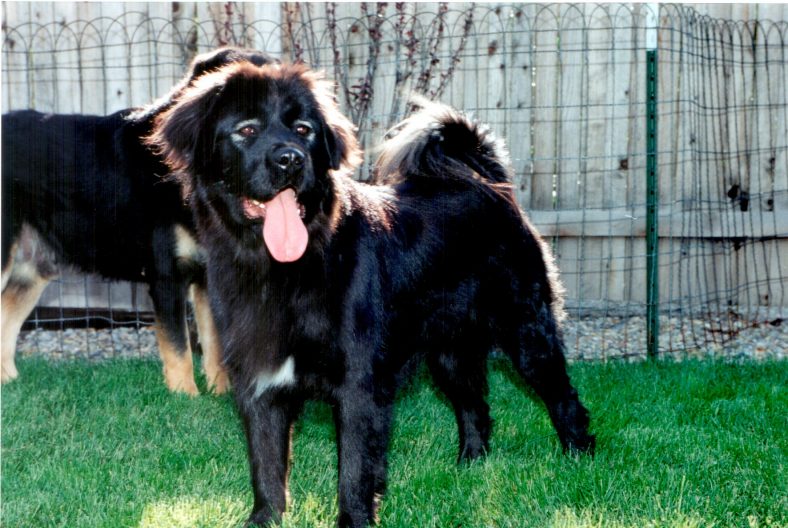Many years ago, I coauthored an article on Tibetan Mastiff coat color inheritance with Charlie Radcliffe. I was fascinated with all the colors and color variations we saw in our dogs. So early on in my Tibetan Mastiff journey, I learned a lot about coat color inheritance only to be thrown for a loop when Magnus and Blaze, both clearly black-and-tan, produced an all-black puppy, Latifa. And I mean clearly all-black. Given what we knew at the time, that was not supposed to happen.
In 1997, black-and-tan, was thought to be the most recessive Agouti allele swimming in the Tibetan Mastiff gene pool. This meant that both black-and-tan parents had only black-and-tan Agouti alleles to give, and thus all of their pups should have been genetically black-and-tan. All-black was thought to reside on the same gene, but as the most dominant allele. Thus, the only way to get an all-black puppy was from at least one all-black parent. Oops.
That was not the first time this had happened. A couple of years earlier, a beautiful all-black female named Iman was born to a gold sire and a black-and-tan dam. Again, no all-black parent, and thus, our understanding of all-black coat color inheritance in those days was flawed. Interestingly, Iman was registered as “black-and-tan” because the registration forms had yet to acknowledge a recessive path to all-black. I remember people referring to her as a “muted” black-and-tan.
Current research suggests the existence of a “Black” gene – the K gene locus. In this scenario, all-black is dominant and all other colors are recessive. That is, if a dog inherits the dominant allele from either or both parents, then they are genetically all-black, and if they inherit the recessive allele from both parents, then the color generated by the Agouti gene is expressed (mostly). Of course, the Brown gene can turn the black coat brown, and the Dilute gene can turn the black coat blue, and both in combination can turn the black coat purple. Call it “Liver” or “Double Dilute” if you must, I prefer purple. In other breeds, there are even more shenanigans, but this doesn’t help any. If the K locus is the only path to an all-black Tibetan Mastiff, then an all-black puppy still needs an all-black parent.
All of this suggests the existence of a recessive path to all-black. But from where? The existence of a recessive gene allele at the bottom of the Agouti stack has been known in other breeds since the 1960s. Unfortunately, this cannot explain what we have seen in the Tibetan Mastiff. Magnus’s parents were both gold and produced both gold and black-and-tan puppies. Magnus and Iman shared their sire, Simba. So, we have to suspect that Simba was a carrier of the recessive all-black, which was passed on to Magnus, but that recessive allele could not have been on the Agouti locus as Simba produced two other Agouti colors. He didn’t have three parents.
In a more recent article, Charlie suggests the existence of an independent recessive black gene, different from the dominant black gene, where recessive all-black Tibetan Mastiffs inherit that recessive allele from both parents. This would suggest that two not-all-black carriers would produce one-quarter all-black puppies, a recessive all-black parent with a not-all-black carrier would produce half all-black puppies, and two recessive all-black parents would produce all all-black puppies. You dizzy yet? Without more data or a genome map, I don’t think we can say anything for sure, but Charlie’s explanation is the best we have at the moment. Still more to learn, stay tuned. Pictured above is my all-black girl, Nika. Her color was recessive, but her beauty was dominating!

Leave a Reply